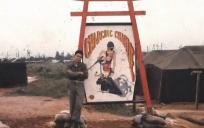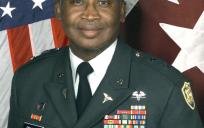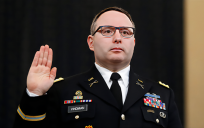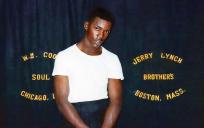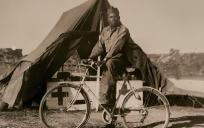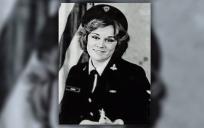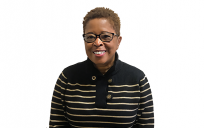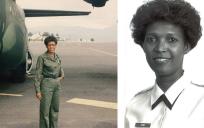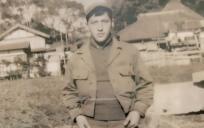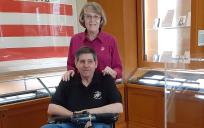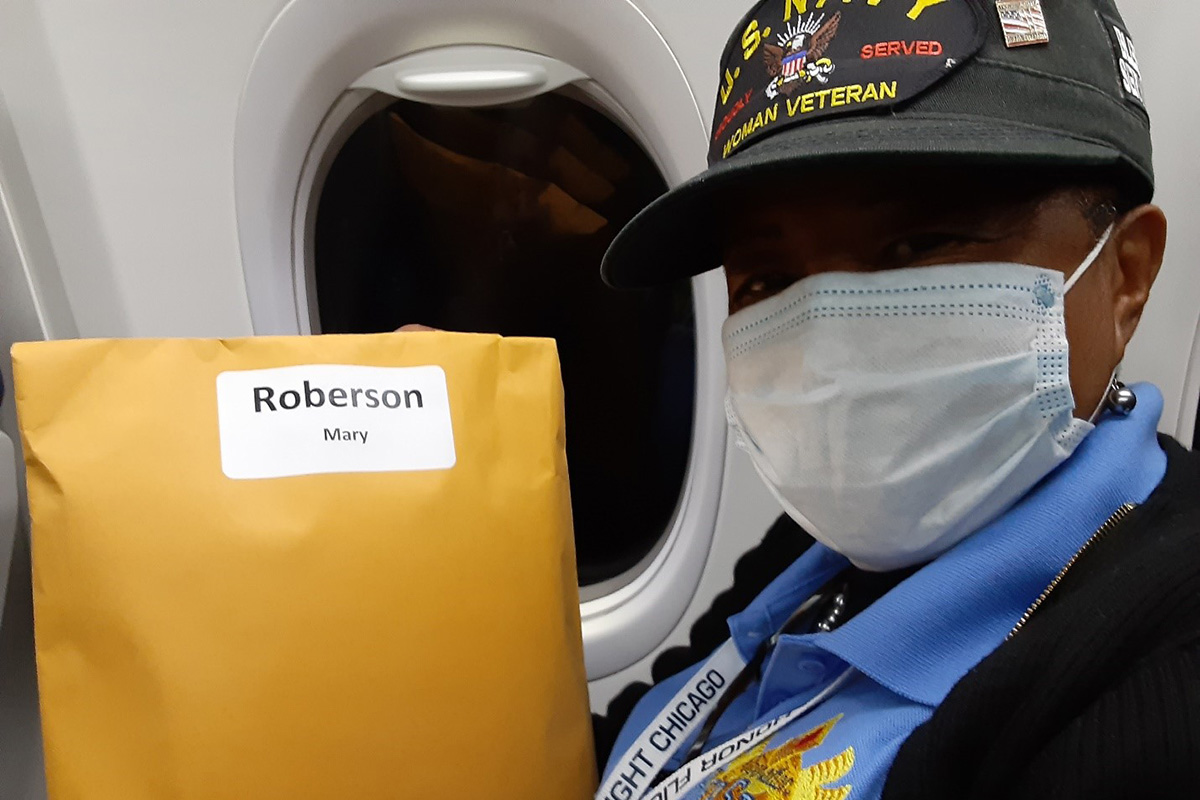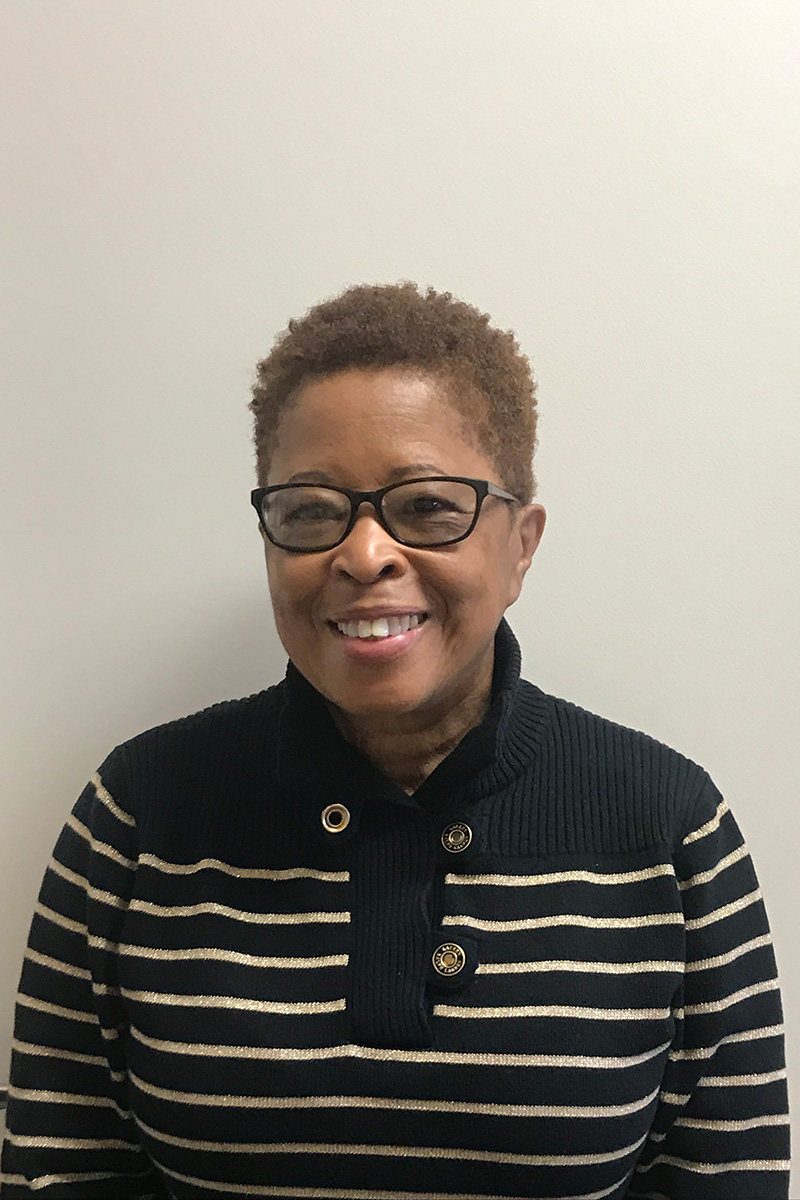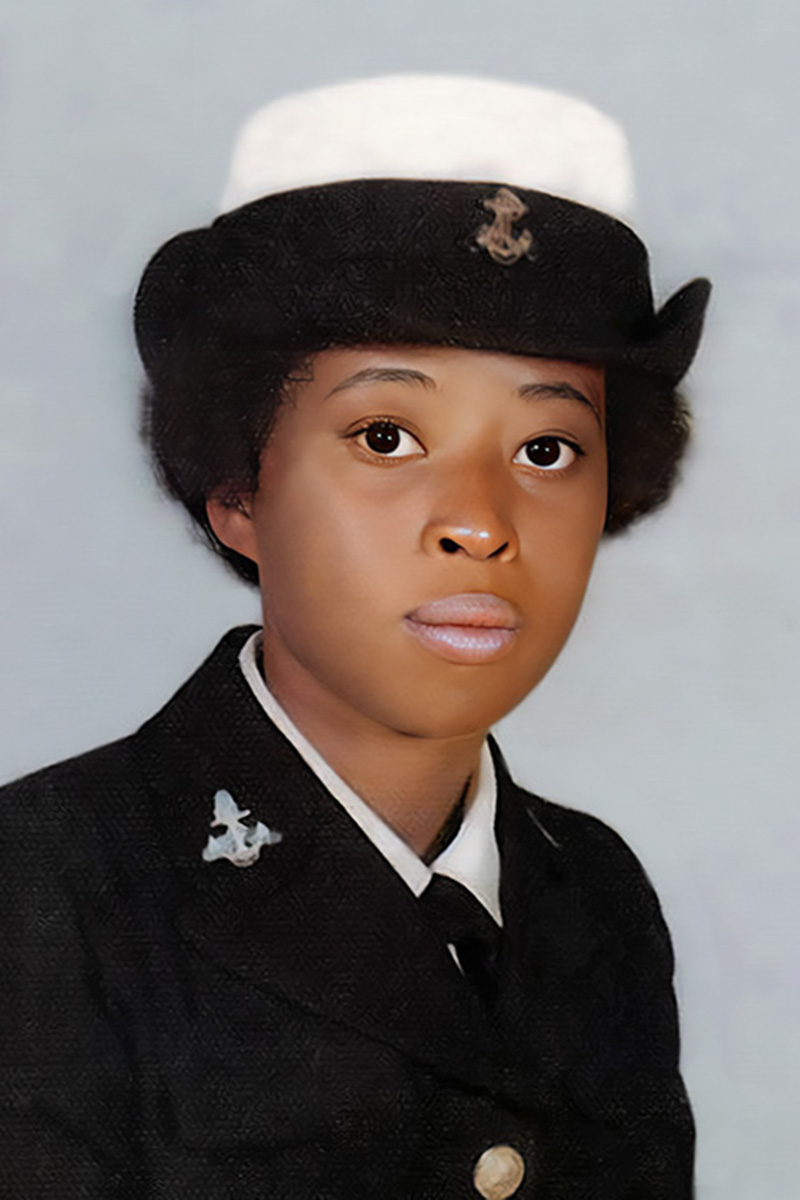
Record date:
Dr. Mary Roberson, Doctor and Petty Officer 3rd Class
From the petite guidon bearer in basic training, to “Dr. Mary” beloved social service supervisor of Lake County Veterans and Family Services Foundation, this Petty Officer 3rd Class has lived a life of leadership and of resilience.
Born in Greenwood, Mississippi, Mary Roberson moved to Chicago as a young child. She grew up in West Garfield Park and Lawndale neighborhoods. Being the oldest girl of fourteen children, she was her mother’s right hand. Mary’s interest in African American history, world geography, and a sense of adventure made her curious about people of diverse backgrounds. In addition to her multi-ethnic neighbors, she enjoyed befriending Latino and White peers at her summer job in Franklin Park. In April 1968, while the family was living on Carrol Street, riots erupted nearby on Madison St., following the assassination of Martin Luther King. She experienced a distressing cultural awakening: her younger bi-racial sister was beaten up by Black members of her own neighborhood.
Two of Mary’s older brothers were in the service, and she became enthralled by the handsome white uniforms of the US Navy worn by one of her brothers and his friend. Indeed, after a brief stint studying at Chicago State University and working at Motorola, she enlisted in the US Navy in 1973. Within sixty days of swearing in, she was boarding a plane to Orlando, Florida for basic training.
Mary took to boot camp like a fish to water, except for the water! Mary respected the military’s strict standards of order and hygiene. She was the guidon bearer of her company, the one who held the US flag or company flag, leading the pack, in marches and in chants. She enjoyed meeting young women from all over the country and learning from them. The military’s “sink or swim” method, however, coupled with her fear of swimming, was terrifying. In time, Mary passed the swimming test, nonetheless.
Two weeks before boot camp ended, Mary was thrilled with her orders to report to duty station Naval Air Station North Island, in Coronado, California. Mary’s responsibilities were comprised of requisitioning inventory for aircraft carriers, the USS Kitty Hawk, and the USS Constellation, which were stationed there as well as procuring supplies needed to build the large hangar at the naval station. She took the opportunity to visit the USS Kitty Hawk.
Although there were strides forward for women in the Navy in the 1970s, some men still thought that they had no place there. Similarly, racial issues emerged - she was teased for dating a White man. As a feisty young woman, Mary was unfazed:
“I didn’t really face the pressure of…discrimination or racism…because I always had the mindset that we’re all in…we’re all the same.”
Mary initially resided at the base but since there were not enough quarters for women, she lived in an apartment in National City, near San Diego. She enjoyed a lively social life and befriended a group of civilians who were attracted to military personnel. Mary laughing recalls getting caught out for having donned her uniform over her red sparkly party attire.
Mary was enjoying the Navy life so much that she was considering a career in it. However, three shocking events occurred. Within a space of a year, two of her brothers got killed by gun violence. Whereas the Red Cross planned for Mary to fly home to Chicago after her first brother was shot, she was on her own regarding the second. She accepted a “Navy hop” to Baltimore and one of the military personnel on the plane promised to drive her to her next destination en route to Chicago. Instead, he assaulted her. Faced with the family’s turmoil and their need for funds to cover the funeral costs, Mary suppressed her own pain and memories of her sexual trauma, though, in general, her middle sister was a great support to her. After six months, Mary was assigned to Long Beach, California, and in spite of already having passed the Petty Officer 2nd Class Exam, chose to return home, in 1976, possibly, a marker of PTSD.
After a few jobs and college courses, Mary worked for Illinois Bell for ten years. Toward the end, Mary got caught up with excessive partying and cocaine use. She thus sought help first at the Jesse Brown VA and later at the North Chicago VA. In time, she succeeded in freeing herself from substance abuse. Around 1989 or ’90, Mary also took the steps of leaving Chicago, away from friends who suffered from addiction to North Chicago to start afresh. There, she met and married her second husband, and both became active in their church.
She also realized that she would derive more joy from people-oriented work, and in 1995, she got a job in the acute rehab program at North Chicago VA. From there, there was no stopping her. Mary continued her education in behavioral health, culminating with her Ed.D. in Counseling Psychology, with the objective of teaching, training, and supervising new counselors. Mary was the manager at NICASA [Northern Illinois Council on Alcoholism and Substance Abuse]. Even in her retirement, she established a 501c3, the Northern Illinois Recovery Community Organization, which she continues to lead today.
It was only with the relative quiet of retirement, that Mary’s suppressed military sexual trauma manifested, itself through nightmares and anxiety. With the help of a social worker, she would acknowledge this horror and work through it.
All in all, she is grateful to the US military for having afforded her opportunities that she would not have had otherwise - whether they be in the realm of education, housing, or broadening her horizons altogether. She also appreciates the respect for discipline that she learned while in service. For her, it was most meaningful to participate in HerStory, the first women-only Honor Flight from Illinois to Washington, DC, in 2021.
